The nearest village to us is Laughton – a sleepy hamlet with only a few cottages and a church. The walls surrounding the church are made of wattle and daub and they have been thatched to protect against weather. All the holes you can see are from Miner Bees.
Even the old animal stabling is thatched.
From Laughton we cross the Gumley Hills where a farmer keeps a suckling herd of cows, which means the the cows are allowed to keep their calves to suckle rather than being separated after a few days. They roam the hills, refuse to get off the road when you are trying to pass, and look lazily at you as if to say ‘I was here first – go round me.’
This little chap hasn’t long been born – you can still see his umbilical cord hanging below.
At Gumley Hall the old stable block, which I visited many years ago, housed the squire’s hunters. I met Lancelot, the biggest horse I have ever seen – I felt dwarfed at the side of him. Sadly the squire and his wife both committed suicide (not at the same time) and the inheritor sold off all the buildings to turn into homes, but the clock tower still stands.
The next stop is Theddingworth where the old railway station, which closed in the 60’s, is now a home – the station house, platform and signal box have all been preserved.
The area all around is mainly used for sheep grazing – I passed this little lot sleeping in the shade – but was amazed at the number of crows gathered in the field – just in case you didn’t know – it is known as a ‘murder’ of crows.
The canal at Theddingworth is a favourite walk – usually quiet and peaceful, although at this time of year there is a lot of holiday traffic on the waterways.
And just by one of the bridges I spotted a gathering of butterflies – the collective name, well, there are a few actually – a lek, swarm, rabble, flight, kaleidoscope and my favourite – a flutter.
Not sure what they were doing – perhaps they had just met up for a natter.
The homeward journey, down a shady lane out into the sunlight and back to my garden.
Where the ‘hot’ border is filling out nicely with zingy colours, waiting for the Rudbeckia to unfurl its petals
I hope you have enjoyed the tour of my little part of the countryside – it is a glorious day today with a cooling breeze and bright sunshine – all’s well with the world.
Have a good weekend.
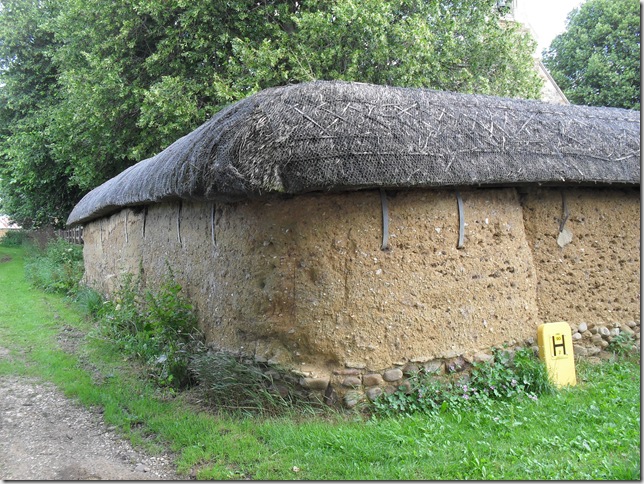
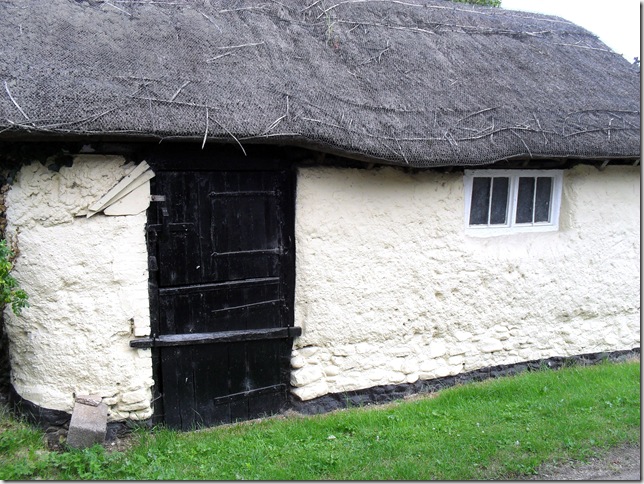
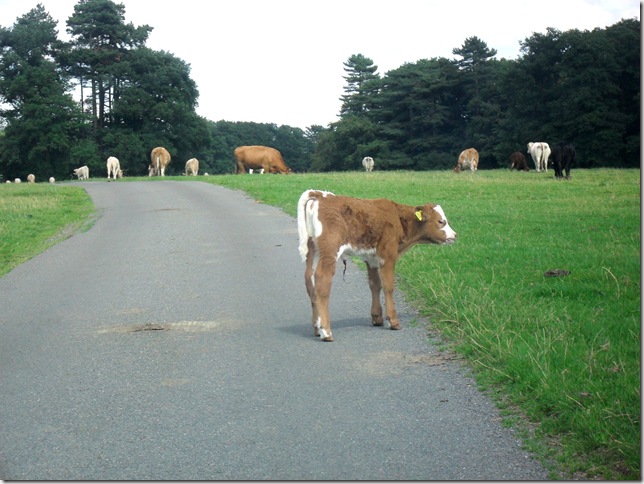


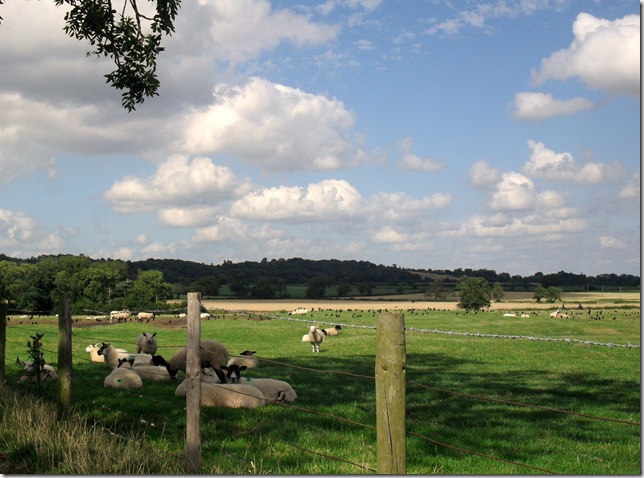

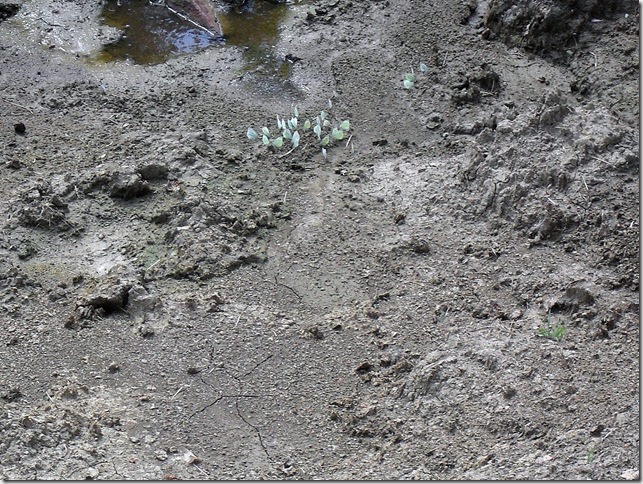
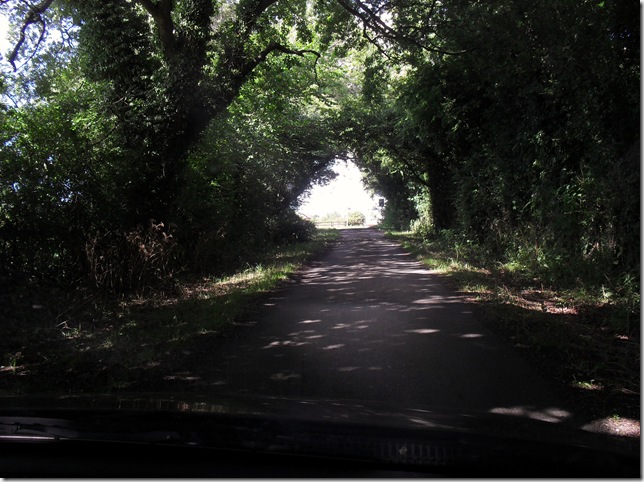
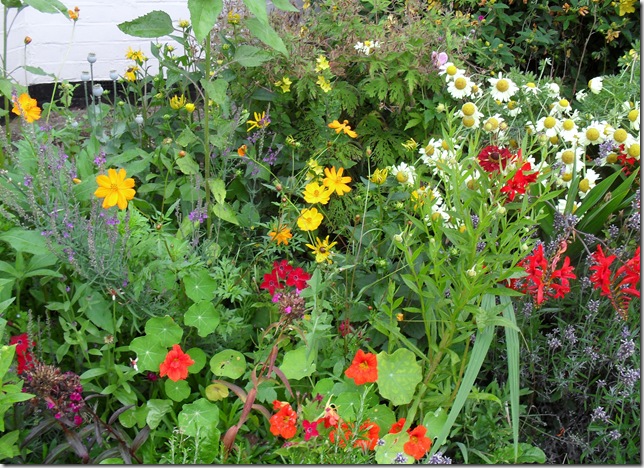
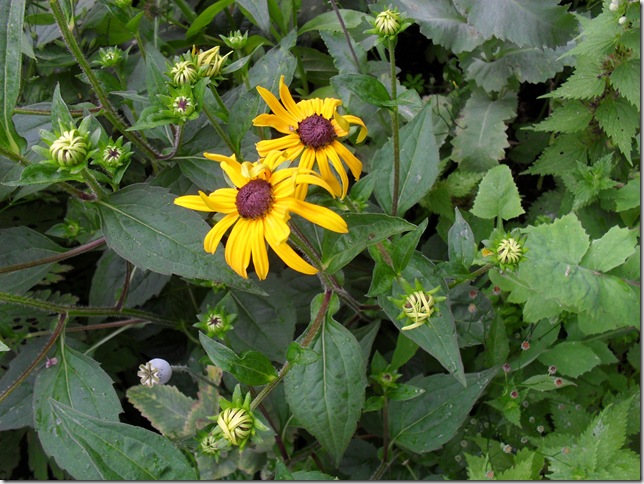
A lovely tour Elaine. We too have rudbeckias unfurling
ReplyDeleteThanks Sue. That one is a perennial but I also sow annual ones as I just love the way they brighten up the garden.
DeleteThank you for the lovely trip in your countryside. I love the English country scenery with her rolling hills, lots of historical places, sheep, horses, all so beautiful. Your 'hot' border looks beautiful, especially in this hot summer. We had today temperatures over 35 degr.C., very unusual and I think too hot.
ReplyDeleteThanks Janneke - I feel blessed to live in such a beautiful part of the countryside. Goodness, it sounds like you are having your fair share of the heat this year - keep cool.
DeleteThank you for a look at your neighbourhood. I was just thinking that I must try and get there if I ever make it back to the U.K. when I came to the photo of the narrowboat. My husband and I had many narrowboat holidays - I am off to an atlas to look up your area.
ReplyDeleteWe are practically surrounded by canals round here and narrowboat holidays seem very popular - it seems such a relaxing way of spending your time.
DeleteLove the trip :D Lazy cows are my favorite. Don't know why but when I see your train station I start whistling Oh doctor Beeching theme song :D :D
ReplyDeleteThanks Leanan - I love to see cows laying down too - they are all boney and angular - just staring into space whilst chewing the cud.
DeleteHow wonderful to have such an interesting walk close enough to your home to not have to drive there first. Your hot border looks lovely:)
ReplyDeleteI cycle it rather than walk - although it is a bit hilly round here so I probably do walk most of it going up the hills - I'm more of a downhill cyclist really haha!
DeleteI've really enjoyed this wander through your local countryside. The old, thatched buildings are fascinating. I love the flutter of butterflies, I imagine there's something in the mud that they're seeking out and they want to congregate to do it! And the hot border is beautiful - my rudbeckia is a little behind yours and will hopefully put on a lovely show this year.
ReplyDeleteThere are quite a few thatched properties round here and a few of the old mud walls, we have two remaining in our village - which we are very proud of. I love the cheerfulness of Rudbeckia and they seem to last ages as a cut flower, which is a bonus.
DeleteA most delightfully tranquil post about what looks to be a truly lovely place.
ReplyDeleteI always say a flutter of butterflies, and I think that these are after a particular mineral which they like.
Flighty xx
Thanks Flighty. My husband seems to think the butterflies are after the salt maybe.
DeleteI keep forgetting that you live on the UK. I love England, and want so badly to return. Your little trip and your photos reminded to get a travel plan on place.
ReplyDeleteI am sure you will make it back one day Ann - it will be interesting to see where your plans take you.
DeleteWhat a lovely place you live near! It reminds me of the little hamlet I used to live in with its four thatched cottages and a bake house. Simple life and simple needs - just perfect. A murder of crows...I'll have to remember that one. xx
ReplyDeleteWe have a local historian who has written a couple of books about the area - in the old days villages were very self-sufficient - our village had all sorts of trades, shops and four pubs and a school - the villagers had everything they needed. There is nothing now except the pub and the church. The school has closed down as has the post office. I bet it was quite a lively place at the turn of the century.
DeleteSIMPLY beautiful ... I loved it!
ReplyDeleteThanks for the share.
I hope you are having a lovely weekend.
Cheers ,
Willow
Thanks for visiting and leaving a comment. Have a good week.
DeleteWhat a fabulous post, I really enjoyed it and learnt several new words, such as wattle and daub!!! What wonderful words!!! I love to think of lots of butterflies as a flutter, it seems so fitting!!!
ReplyDeleteI love the thatched stable and thought the sweet little calf pic and the canal were gorgeous!!!You do have such lovely walks close by, how sad about the suicides though.
Wow, your hot border does look hot.....so much in bloom!!! Lovely!xxxx
Thanks Snowbird. It's funny really - when you see things everyday you tend not to take much notice but doing a blog post makes you more aware and see things through other people's eyes.
DeleteSuch amazing scenery, leaves me in awe of all this beauty! Thanks for sharing these pictures, look forward to more journeys! Makes me feel like I stepped outside of the city for a bit. :)
ReplyDeleteHi Pamela - thanks for visiting and leaving a comment. Glad you enjoyed the post it is beautiful here at the moment, so lush and green everywhere and everything looks so much better in the sunshine which we are having plenty of this year (for a change).
ReplyDeleteI was up early today to sneak in some blog time. Your post has given me the perfect way to start the day. A little bit of England at it's most beautiful. I see your garden is still going strong. Flower gardens here are worn out with the heat.
ReplyDeleteThe weather has cooled off a bit now, thank goodness and we have been having rain showers too so the gardens have picked up a bit - at least I don't have to water every evening now - it is such a pain.
DeleteI love the roof on those village houses! SO neat. And what's that thing on the river? I've never seen anything like that before. Looks like a river bus?
ReplyDeleteThat 'thing' is a narrow boat which people live on or rent for canal boat holidays. Canals are waterways that were dug out by 'navvies' in the old days for transporting goods between towns.
DeleteWhat a beautiful walk Elaine, I really enjoyed it, particularly those lovely wattle and daub thatched buildings, and the clock tower.
ReplyDeleteThanks Janet.
DeleteLove the lek of butterflies! Thanks for sharing the rural ramble - and my legs aren't even aching :)
ReplyDeleteI rather wonder how the word lek evolved and how on earth it can be related to a gathering of butterflies! Glad you enjoyed the ramble.
DeleteI thought the word lek referred yo a gathering of males displaying to compete for female mates as in grouse. Probably comes from an appropriate foreign word or old English word.
DeleteIt sounds a bit like a broad Yorkshire word - laiking - meaning playing.
Just checked it out Sue and the word lek means ' to play' in Swedish - but refers to a male gathering also, so it sounds as if you are right - maybe WikiAnswers has taken a bit of a liberty with the word.
DeleteSo I wonder if the Yorkshire word is some sort of derivative. I wonder whether the Vikings had a similar word as there are many place names that are courtesy of the Vikings.
DeleteJust done a bit of ferreting and found that the Yorkshire laike does indeed come from an old Norse word leika. Seems lots of Yorkshire words have a Norse origin which is hardly surprising. Just look where your post has taken me!
DeleteFascinating stuff - it is interesting to find out how our language originated - I think we forget just how much of an influence foreign invaders had on our language.
Delete